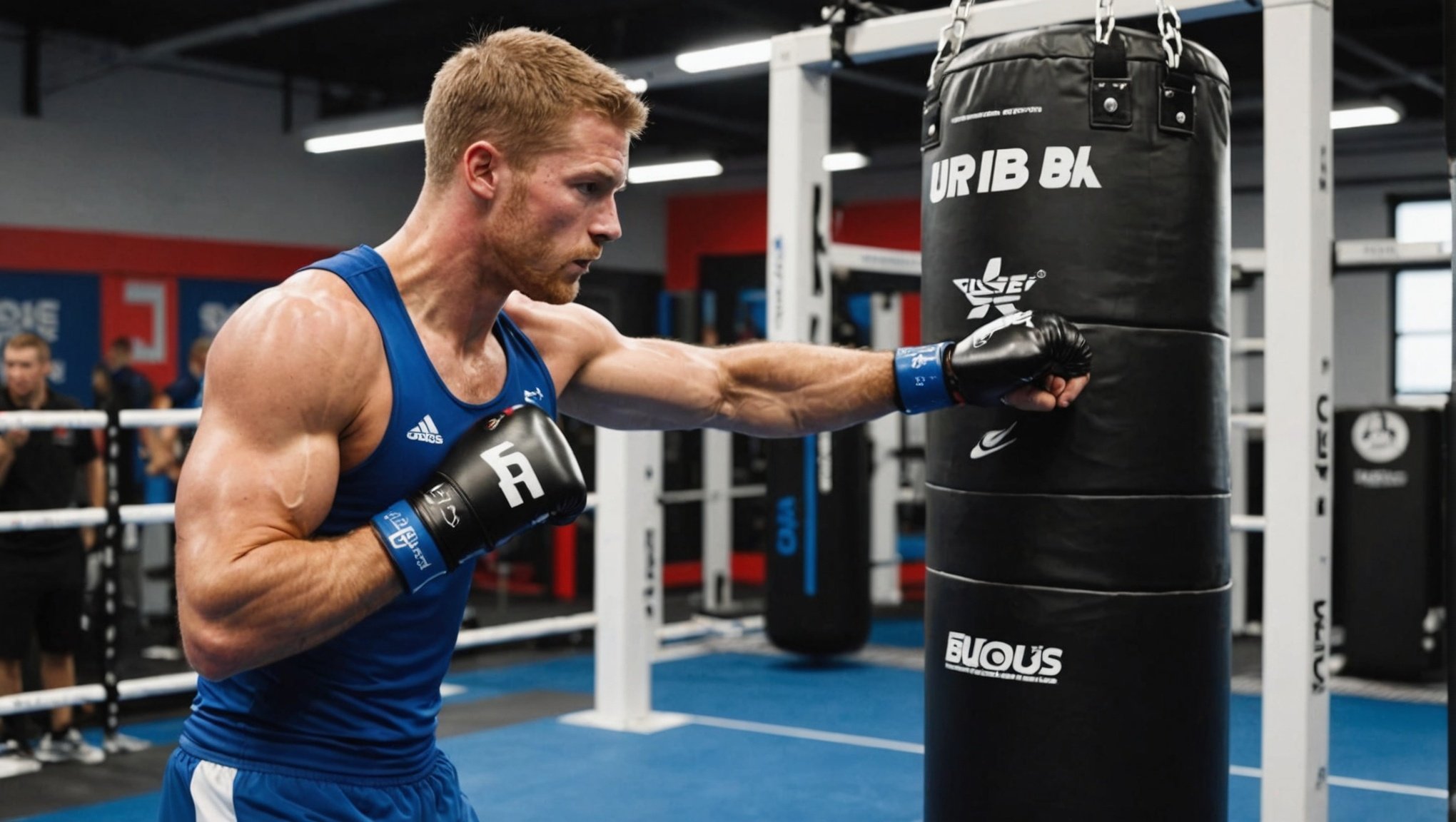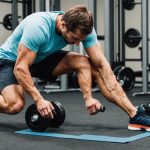Unlocking Punching Power: The Impact of Biomechanics on UK Athletes’ Performance
In the world of sports, particularly in combat sports like boxing and Muay Thai, the pursuit of optimal performance is a constant and evolving journey. One of the key factors that can significantly enhance an athlete’s performance is the application of biomechanics. Biomechanics, the study of the mechanical aspects of living systems, has revolutionized how athletes train, perform, and recover. Here, we delve into how biomechanics is transforming the way UK athletes, especially those in combat sports, achieve and maintain peak performance.
Understanding Biomechanics in Sports
Biomechanics in sports involves the analysis of movement patterns, muscle activation, and the forces involved in various athletic activities. This field combines principles from physics, engineering, and biology to optimize athletic performance and prevent injuries.
In the same genre : Essential Dietary Strategies for UK Sumo Wrestlers to Enhance Training Performance
The Role of Biomechanical Analysis
Biomechanical analysis is crucial for identifying inefficiencies and deficits in an athlete’s technique. For instance, in the case of quarterbacks like Brock Purdy and Caleb Williams, biomechanical analysis revealed specific issues in their throwing mechanics. Purdy’s tight throwing shoulder and limited external rotation were identified through high-speed cameras and visual cueing, allowing for targeted interventions such as physical therapy and specific exercises to enhance his throwing delivery.
Similarly, in running, biomechanical analysis helps athletes understand and correct their movement patterns. At FixMyRun, a running technique specialist firm, athletes undergo a thorough biomechanical and functional movement analysis. This involves videoing the athlete’s movements and playing them back in slow motion to highlight areas for improvement. Such detailed analysis enables athletes to make informed changes to their technique, reducing the risk of injury and improving overall performance.
Also to read : Unlocking Optimal Recovery: Best Muscle Recovery Techniques for UK Kickboxers Post-Intense Bouts
Enhancing Punching Power Through Biomechanics
Punching power is a critical component of combat sports, and biomechanics plays a pivotal role in its development.
Key Components of Punching Power
- Force Production: The ability to generate force is fundamental to punching power. Biomechanical training focuses on optimizing the sequence of muscle activation and the timing of force production. For example, in Muay Thai, the use of the hips and legs to generate torque is essential for powerful strikes.
- Muscle Activation: Understanding which muscles are activated during a punch and how they contribute to the overall force is vital. Training programs often include exercises that target specific muscle groups, such as the core, legs, and shoulders.
- Hand Speed: Hand speed is another critical factor. Biomechanical analysis can help athletes optimize their hand speed by improving their technique and reducing unnecessary movement.
- Body Rotation: Effective body rotation is key to generating power. Athletes are trained to rotate their hips and torso to maximize the force behind each punch.
Training Programs and Techniques
Biomechanically informed training programs are designed to enhance these components of punching power.
- Strength Conditioning: Strength training is a cornerstone of any athletic performance program. For combat sports, strength conditioning focuses on building explosive strength, particularly in the muscles involved in punching, such as the shoulders, back, and core.
- Exercise Examples:
- Medicine Ball Throws: These exercises help develop explosive power and improve hand speed.
- Boxing Drills: Drills that involve punching bags or pads while focusing on proper technique and body rotation.
- Resistance Band Training: This helps improve the strength and speed of the muscles involved in punching.
| Training Component | Exercise Examples | Benefits |
|
|-------------------|
|
| Strength Conditioning | Medicine Ball Throws, Boxing Drills, Resistance Band Training | Explosive Power, Hand Speed, Muscle Strength |
| Body Rotation | Hip Rotation Drills, Torso Rotation Exercises | Increased Force Production, Improved Technique |
| Muscle Activation | Core Strengthening Exercises, Leg Strengthening Exercises | Enhanced Stability, Better Muscle Coordination |
| Hand Speed | Shadow Boxing, Focus Mitt Work | Improved Hand Speed, Enhanced Reflexes |
Preventing Injuries Through Biomechanics
Injury prevention is a critical aspect of athletic performance, and biomechanics plays a significant role here as well.
Identifying and Correcting Movement Patterns
Biomechanical analysis helps in identifying movement patterns that could lead to injuries. For example, in running, if an athlete’s foot strike pattern is inefficient, it could lead to overuse injuries like shin splints or plantar fasciitis. By correcting these movement patterns through targeted exercises and training, athletes can significantly reduce their risk of injury.
In combat sports, improper technique can lead to injuries such as shoulder or wrist sprains. Biomechanical analysis can help athletes correct their punching technique, ensuring that the forces generated during a punch are distributed efficiently across the body, reducing the risk of injury.
Rehabilitation and Recovery
Biomechanics is also crucial in the rehabilitation process. When an athlete is injured, a biomechanical analysis can help identify the root cause of the injury and guide the rehabilitation program. For instance, after Brock Purdy injured his elbow, he returned to CORTX for biomechanical analysis and training. This approach helped him address the underlying issues and return to peak performance.
The Future of Biomechanics in Sports
The integration of advanced technologies such as machine learning and high-speed cameras is revolutionizing the field of biomechanics in sports.
Advanced Technologies
- Machine Learning: Machine learning algorithms can analyze vast amounts of data from biomechanical analyses to predict injury risk and optimize performance.
- High-Speed Cameras: These cameras provide detailed slow-motion footage of athletes’ movements, allowing for precise analysis and feedback.
- Motion Capture: Technologies like motion capture can provide three-dimensional footage of athletes’ movements, helping to identify inefficiencies and strengths in their technique.
Personalized Training Programs
With the help of biomechanical analysis and advanced technologies, training programs can be highly personalized. For example, at CORTX, quarterbacks undergo detailed biomechanical analysis to identify specific deficits in their throwing mechanics. This information is then used to create a tailored training program that addresses these deficits, ensuring that each athlete receives the most effective training possible.
Practical Insights and Actionable Advice
For athletes looking to enhance their performance through biomechanics, here are some practical insights and actionable advice:
- Seek Professional Analysis: Work with a biomechanics specialist to undergo a thorough analysis of your movement patterns.
- Focus on Technique: Ensure that your technique is correct and efficient. Proper technique can significantly enhance performance and reduce the risk of injury.
- Incorporate Strength Training: Strength training is essential for building the power and speed needed in combat sports.
- Use Advanced Technologies: Utilize high-speed cameras and motion capture technology to gain detailed insights into your movements.
- Stay Flexible and Mobile: Maintain flexibility and mobility through regular stretching and mobility exercises.
Biomechanics is a powerful tool in the arsenal of modern athletes, particularly those in combat sports. By understanding and optimizing movement patterns, athletes can enhance their performance, prevent injuries, and achieve their full potential. Whether it’s through detailed analysis, personalized training programs, or the integration of advanced technologies, biomechanics is revolutionizing the way athletes train and perform.
As Dr. Jason Park, an expert in Muay Thai training, might say, “The key to unlocking punching power is not just about brute strength, but about efficient movement and precise technique. Biomechanics helps athletes achieve this efficiency, making them more effective and resilient in their sport.”
In the world of sports, where every fraction of a second and every ounce of force can make the difference between victory and defeat, the impact of biomechanics cannot be overstated. It is a field that continues to evolve, offering athletes the tools they need to reach new heights of performance and success.











